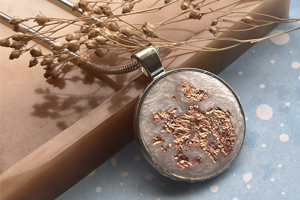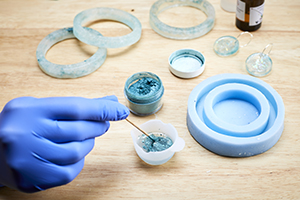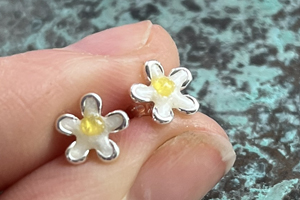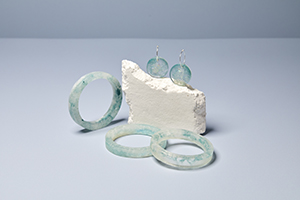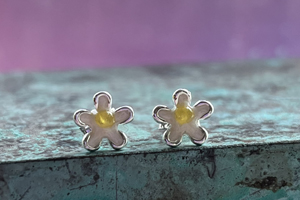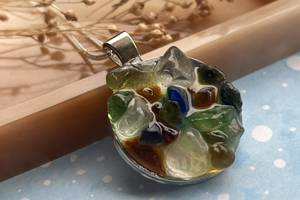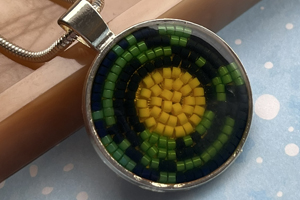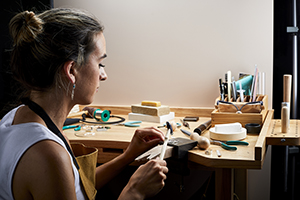Get Creative With Resin Jewellery Making
Shop all
Want to Learn How to Make Resin Jewellery?
Making jewellery with resin is a unique and exciting way to get creative. Resin is a clear liquid which, when combined with a hardener, sets solid. What sets resin apart is its versatility – you can add various colours and embed items like images, flowers and other special items. Think of it as wearable art.
Knowing how to make resin jewellery however does take time and a lot of practice. From getting to grips with the mixing ratio to knowing what can and cannot be set in resin, there is a lot to understand before you begin your resin jewellery-making journey. That’s where we can help.
Want to make jewellery with resin? Let us help you get started…

Essential Tools for Resin Jewellery Making...
Discover the art of resin jewellery making here at Cooksongold. Working with resin gives you endless possibilities! Add colour, objects and so much more and watch as you create unique, one-off pieces every time.
To start your resin jewellery making journey, you will need to have a few essential tools to ensure you create professional, high-quality pieces. These include:
Shop Now
Frequently asked questions
Although resin isn’t toxic, it is categorized as hazardous goods. Resin works by creating a chemical reaction and therefore is classed as being as dangerous as other household chemicals and must be handled carefully. Taking safety precautions such as ensuring you wear safety gloves, eye protection and an apron when mixing resin is important. Resin must not be inhaled or swallowed.
Moulds are not essential when making resin jewellery. Using blanks and settings is a great starting point, especially for beginners. Why? To put it simply, blanks are easier to work with. You only have to worry about the top part of your resin, no filing or sanding will be required and you can scoop out and start again if your resin fails to cure. Moulds are versatile but it is a lot easier to create a finished piece when using a setting.
It is important to measure resin correctly. The mix ratio of epoxy resin and hardener is 2:1. This means, by volume you will require two parts of your resin and one part hardener. Not measuring correctly may cause your resin to fail to cure so be sure to use a measuring jug for accuracy.
Unfortunately, when working with resin, you may find that your piece has bubbles. Bubbles can be caused by a range of issues, which include not sealing photographs, the temperature of your resin and overmixing, amongst others. Bubbles can be removed by carefully using a toothpick to pop the bubbles or a straw to gently blow the bubbles out. If there are too many bubbles you may need to repour, but practice makes perfect so don’t give up!
Cloudy resin is often caused by using the wrong mould. To make shiny resin you will need to use a specialist resin mould that has a shiny cavity as only this will ensure that your piece is shiny when you remove it.
The process through which epoxy resin goes from a liquid into a solid is referred to as curing. This is done by mixing your resin correctly with hardener. With the correct ratio, your resin should cure within 24 hours.
Resin Glossary
Accelerator
An additive designed to speed up the reaction between the resin and the hardener.
Air Bubble
A common occurrence when pouring resin, air bubbles can be easily fixed by quickly popping with a toothpick. If you are consistently seeing air bubbles you may need to rethink how you are mixing your resin.
Bezel Setting
A jewellery setting with a ridge that can hold the resin in place.
Casting
The process of pouring resin and leaving to cure.
Curing
This is the name given to the setting of resin.
for exclusive offers & advice
By subscribing you agree to our Terms and Conditions and Privacy & Cookies Policy.
We ship to over 70 countries! With fast, cost effective delivery methods. More Info.
© 2025 Cookson Precious Metals Ltd. VAT Registration No. GB161 8062 21. Registered in England no. 2775187. Registered Office: 59-83 Vittoria Street, Birmingham, B1 3NZ
Tel: 0345 100 1122 or 0121 200 2120 Fax: 0121 212 6456


